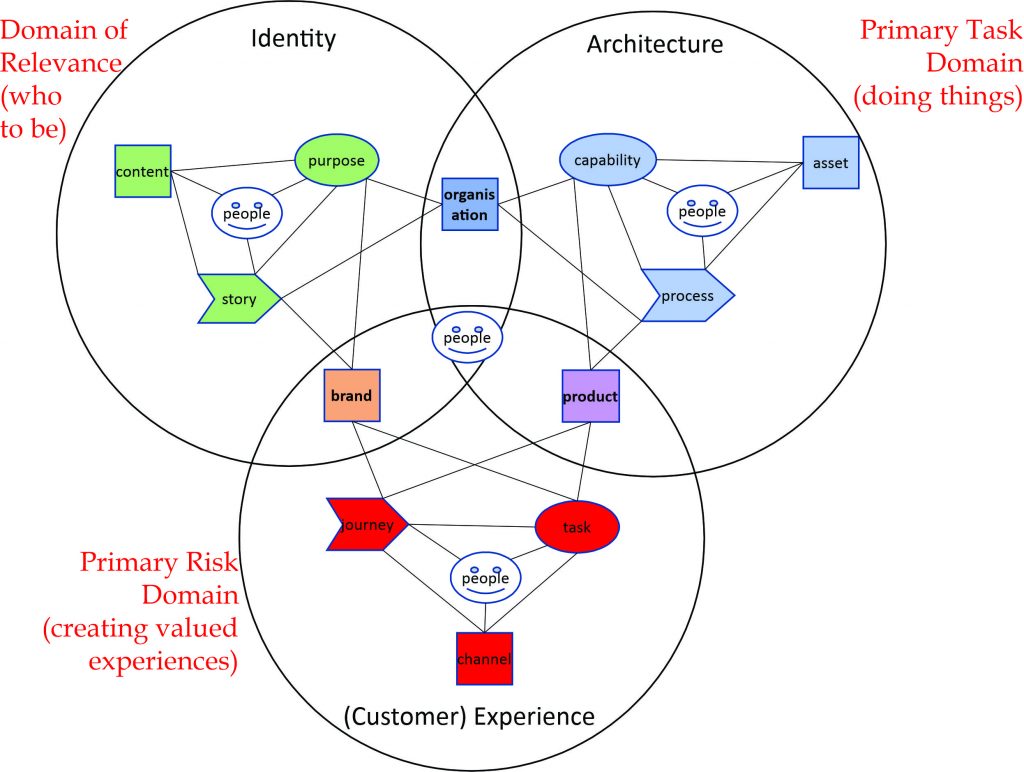by Philip Boxer
Why three kinds of symmetry-breaking? Because each symmetry is based on a different kind of basis for agreement: ‘how to do things’, ‘who to be’ and ‘what to want’. The need for this ‘threeness’ to work within an open value space is discussed in Evaluating Architectures.
The following diagram is adapted from the publications of the Intersection Group and their ‘edgy’ language. The kinds of relations being established by the people in each circle face a different kind of challenge, as do the people who are holding the three circles in relation to each other at their intersection:

Within each of these circles it is assumed that a symmetry may be established, i.e., that the relations within the circle do not depend on any one person’s perspective. The following quote addresses the nature of symmetry-breaking:
It is widely agreed that there is a close connection between symmetry and objectivity, the starting point once again being provided by spacetime symmetries: the laws by means of which we describe the evolution of physical systems have an objective validity because they are the same for all observers. The old and natural idea that what is objective should not depend upon the particular perspective under which it is taken into consideration is thus reformulated in the following group-theoretical terms: what is objective is what is invariant with respect to the transformation group of reference frames.
The basis on which such agreement may be established is different, however, within each circle:
- for the ‘Architecture’ people we can expect them all to agree what capabilities and processes are ‘there’ (i.e., the primary task domain describing how it is possible to ‘do things’);
- for the ‘Identity’ people, we can expect all those who accept the organization’s framing of purpose and story to agree how to speak about what’s relevant about what’s ‘there’ (i.e., the domain of relevance that derives from the assumptions being made about ‘who to be’); and
- for the ‘Customer Experience’ people, we can expect the customers to be the authority for what is the journey and task that matters to them (i.e., the primary risk domain in which assumptions are made about what kinds of experience will be valued).
These are three different kinds of symmetry, each of which gets ‘broken’ in its own way in the face of disagreement over the different bases of agreement within each circle. Thus,
- Architectural symmetry-breaking is about there existing different ways of understanding how to ‘apply’ technology.
- Identity symmetry-breaking (i.e., different ways of identifying) is about there being different ways of understanding what the organization needs to be ‘about’.
- Customer experience (CX) symmetry-breaking is about there being different ways in which customers are choosing to organize their lives, each demanding different forms of customer experience.
In order for an enterprise to create and capture value, these three circles have to be held in relation to each other. This is the challenge faced by the people at the intersection of the three circles. They have to be able to recognize both all three forms of symmetry-breaking and also the increasingly dynamic nature of the relations between them. The purpose of a Relational Architecture is to support the digital modeling of the choices open to them in how they do this.
This kind of modeling becomes important as demand tempos accelerate. The enterprise has to move from working with a static to a dynamic understanding of CX, which of course means that the other two circles have to become increasingly dynamic too.